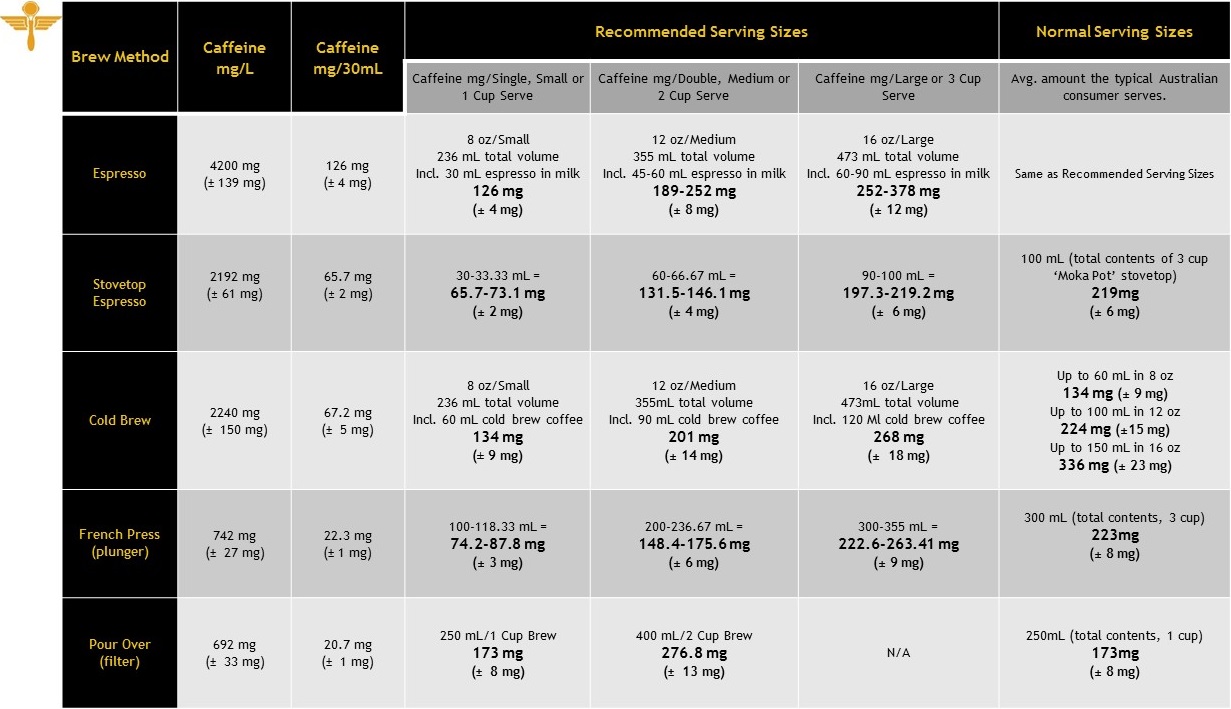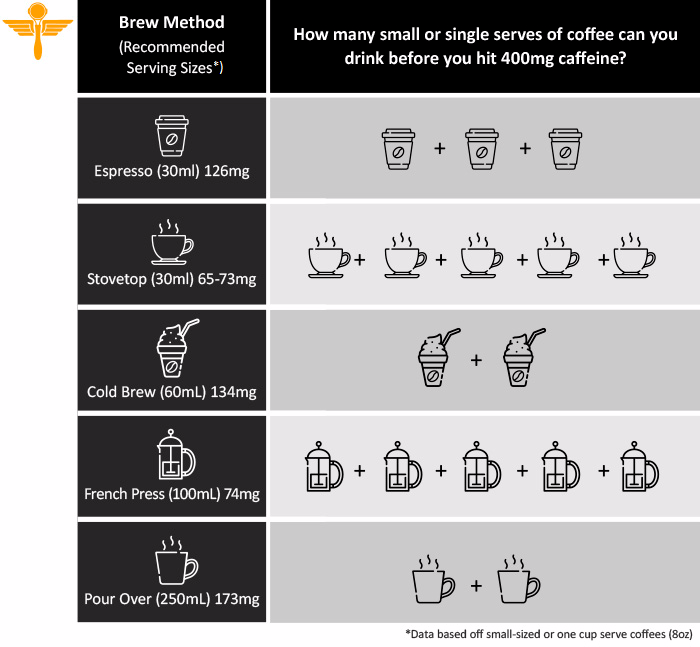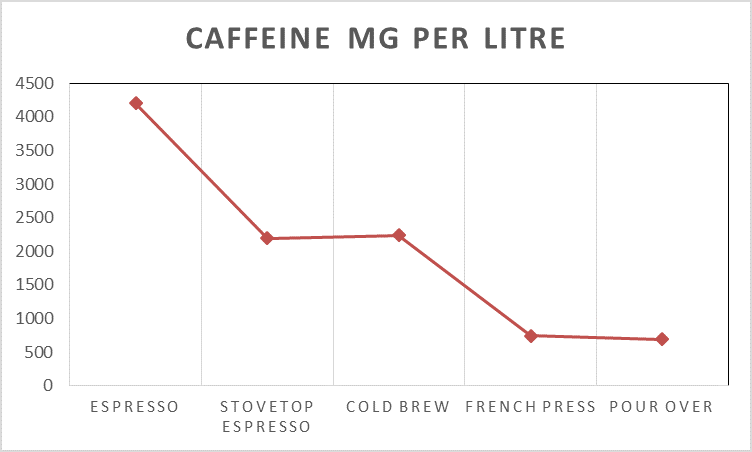Do you know how much caffeine is in your cup?
A new study in collaboration with the Chemistry Staff in the University of Newcastle examines caffeine content across Australia's favourite brewing methods.
Overview
When it comes to the caffeine content found in a cup of coffee there are resources everywhere… but there is a lot of inconsistency between results with little explanation for the discrepancies. We wanted to find out exactly how much caffeine was in each kind and size of brew most commonly consumed in Australia.
To work this out we chose five common brewing methods in Australia:
- - Espresso - run-of-the-mill barista-made coffee
- - Pour Over - brew poured through a paper or metal filter
- - Stovetop Espresso - boiled on a regular home stove
- - Cold Brew - brewed by replacing heat with time, typically overnight (8-12 hours)
- - French Press - also known as a plunger or a coffee press
To make the experiment as uniform as possible, we used the same Colombian washed beans for each brew and made each brew five times before combining them to ensure we'd accounted for any variables.
What's the most efficient cup of coffee?
Espresso was found to be the most efficient for consumers, extracting two to six times the amount of caffeine of the other brews in a shorter amount of time, using the same amount of beans.
Coffee culture is on the rise in Australia with cities like Melbourne treating espresso as if it’s forty-year-old scotch and the notion of being literally unable to function before your morning brew is now socially acceptable. This growth in coffee culture has prompted consumers to learn more about their daily caffeine fix. Some key findings from the study were:
- - Espresso used a similar amount of grind, but extracted the most caffeine and had the shortest brew time
- - Cold Brew extracted the second highest amount of caffeine but requires 8-12 hours to brew
- - French Press and Pour Over methods extracted the smallest amount of caffeine, each producing less than a quarter of espresso's caffeine content
The full results of the study can be found in the table below, which compares how much caffeine is in a litre of each brew; 30mL of each brew; a small, medium and large recommended serve of each brew; and the normal serving size Australian consumers are making for themselves.

Is Your Daily Caffeine Fix Too Much?
Do you know the recommended caffeine content in your mug of coffee? What about your daily intake limit or when you've hit it? Most Australians don't and when it comes to resources on the topic, they're far and few between for the Australian market.
While there are inconsistencies across government health websites suggesting differing caffeine contents in products, one thing is consistent - they all tell us that research suggests we consume no more than 400mg of caffeine in a day.

Through serving the home coffee market, countless conversations with coffee lovers, and developing our brew method guides, we have observed that Australian consumers tend to ignore or are unaware of recommended serving sizes, particularly with methods like French Press and Stovetop. For example, it is the habit of most Australian consumers to drink the entire contents of a 3 Cup French Press or a 2 Cup/3 Cup Stovetop brew as a single serving. For this reason, we have included a 'Normal Serving Size' section in our findings, as it reflects more accurately what we understand (anecdotally) to be the amount of coffee/caffeine Australians are potentially consuming.
Another interesting discovery from this study was how close in caffeine content a ‘mug’ size of each brew method was. In the table below, we have compared a mug size of each brew method; an average ‘mug’ size is between 8-12 oz (236-355 mL) and the caffeine content for each brew method is based off the normal serving sizes. As you can see, the methods produced very similar amounts of caffeine in a typical sized serving, with most producing differences of less than 50 mg.

How to Get More Caffeine In Your Cup
Espresso extracted a much larger portion of caffeine compared to every other method examined.
Considering all factors, we found there were a number of reasons leading to espresso milking the most caffeine from the bean.
The biggest effect came from grind size. Espresso uses an extremely fine grind which creates more surface area for the caffeine to be extracted from.
Other significant factors that came into play when it came to extracting caffeine were the temperature and brewing time.

Crema Coffee Garage. "Caffeine in Coffee: A Comparison of Espresso, Stovetop, Pour Over, Cold Brew & French Press" 25 September, 2018. <https:cremacoffeegarage.com.au/caffeine-study>
For more information, please visit https://cremacoffeegarage.com.






